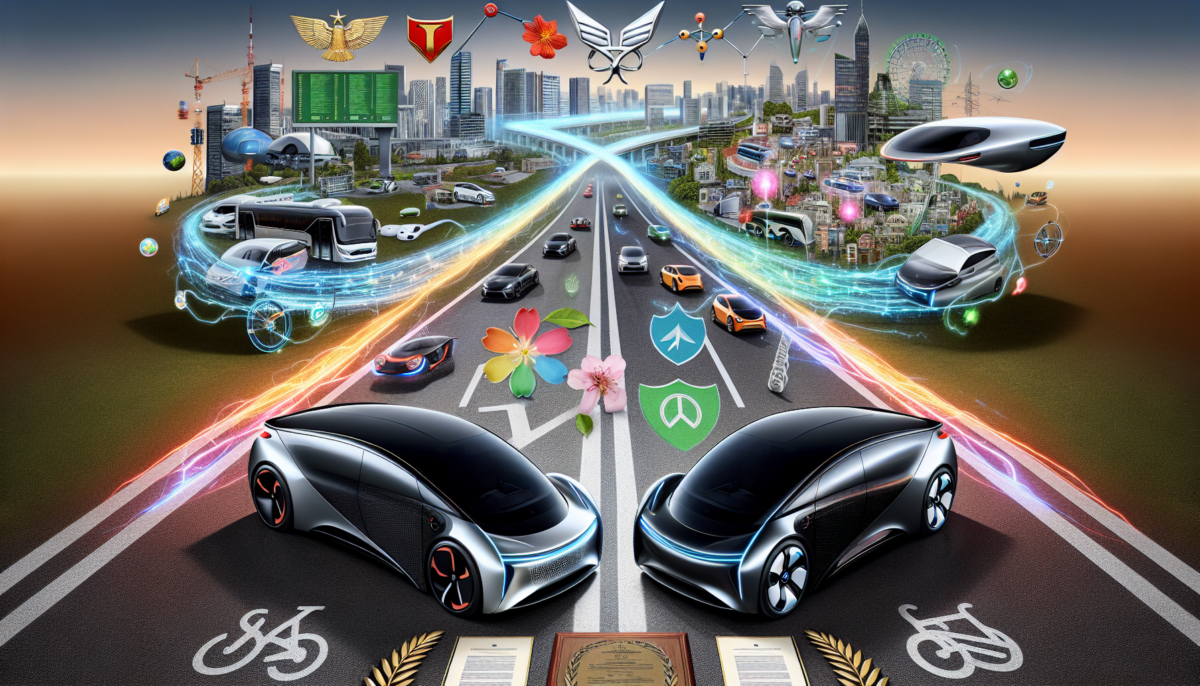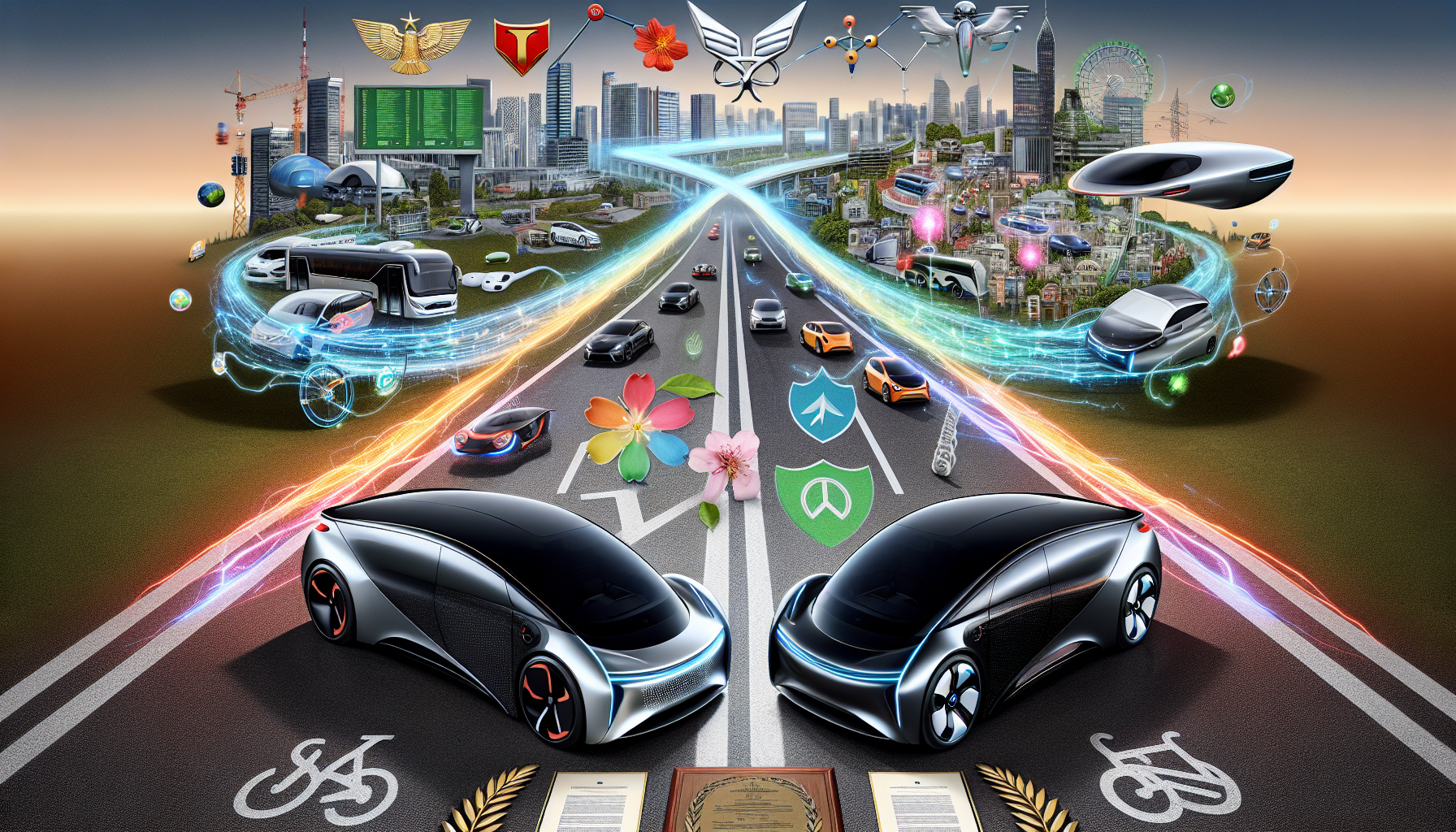“Nissan and Honda Collaborate in Historic MOU to Address EV and Intelligent Vehicle Revolution”
We independently review everything we recommend. When you buy through our links, we may earn a commission which is paid directly to our Australia-based writers, editors, and support staff. Thank you for your support!

Brief Overview
- Nissan and Honda have entered into a Memorandum of Understanding (MOU) to investigate the formation of a joint holding company.
- The collaboration targets electric vehicles (EVs), autonomous technology, and software-defined vehicles (SDVs).
- Primary aims include the standardization of vehicle platforms, collaborative R&D efforts, and enhanced supply chain management.
- A final agreement is anticipated by June 2025, with the launch of the holding company set for August 2026.
- This move illustrates how established automakers are evolving to meet the challenges of an EV and smart vehicle era.
Nissan and Honda Unite for the EV and Intelligent Vehicle Era

A Pivotal Alliance in the Evolving Automotive Industry
Nissan and Honda, prominent players in Japan’s automotive sector, have formalized a Memorandum of Understanding (MOU) to investigate the creation of a joint holding company. Announced on December 23, 2024, this collaboration directly addresses the significant transformation within the global automotive landscape toward electric vehicles (EVs), autonomous technology, and software-defined vehicles (SDVs). Amidst a landscape increasingly dominated by Tesla and tech-focused disruptors, traditional manufacturers face mounting pressure to innovate or risk becoming obsolete.
This initiative builds on a strategic agreement previously established in March 2024. The MOU aims to fuse the distinct strengths of both firms in electrification, vehicle intelligence, and advanced manufacturing, creating a formidable mobility powerhouse.
Core Goals of the Collaboration
The proposed integration emphasizes the use of combined resources to enhance competitiveness in the age of smart vehicles. Key areas of cooperation include:
- Standardizing Platforms: By synchronizing vehicle platforms, Nissan and Honda intend to minimize both development and manufacturing expenses.
- Collaborative R&D: Sharing R&D initiatives will hasten progress in EV technology and autonomous systems.
- Integrating Supply Chains: Streamlining manufacturing and logistics is projected to decrease fixed costs and boost operational efficiency.
- Synergizing Costs: Integration of back-office functions and sales finance is forecasted to significantly lower operational costs.
Ultimately, the partnership aims to enhance efficiency while delivering innovative, customer-oriented solutions.
Financial Realities and Obstacles
Navigating Economic Pressures and Advancement
Although the partnership presents substantial possibilities, it comes with its own set of challenges. Merging operations could result in job redundancies and an identity crisis for the brands. Nevertheless, both companies confront notable financial pressures to invest in next-generation technologies while maintaining profitability. Leaders from both organizations have expressed hope about finding a workable balance:
- Nissan’s CEO, Makoto Uchida, stressed the opportunity to offer unparalleled customer value by blending their capabilities.
- Honda’s Executive Officer, Toshihiro Mibe, underscored the necessity of resource integration to tackle the industry’s environmental and technological hurdles.
A Look Ahead
Plans and Target Dates
The path forward for integration is outlined with critical milestones:
- A definitive business integration agreement is anticipated by June 2025.
- The holding company, pending shareholder and regulatory endorsements, is set for establishment by August 2026.
- The new entity will aim for listing on the Prime Market of the Tokyo Stock Exchange, highlighting its ambition to become a leader in the global automotive field.
This partnership represents a significant transformation in how traditional automakers operate in an environment where EVs, software, and AI-driven technologies are paramount.
Final Thoughts
The collaboration between Nissan and Honda holds the potential to reshape the automotive industry, potentially establishing a new standard for how conventional manufacturers can transition into a technology-oriented future. If executed successfully, this joint venture may provide a framework for other automakers facing the pressures of the EV and autonomous vehicle transition.
However, the ultimate effectiveness of the partnership will hinge on how adeptly the companies navigate integration challenges, foster innovation at scale, and resonate with a new generation of tech-oriented consumers. As the automotive sector observes, it is clear that this moves beyond mere merger—it’s a significant stride toward the future of transportation.
Overview
Nissan and Honda are investigating a groundbreaking partnership aimed at adapting to the shifting automotive landscape. Through a planned joint holding company, they strive to combine their strengths in EVs, autonomous technologies, and software-defined vehicles. While the initiative presents significant promise for cost savings and technological advancements, it also faces challenges like job overlaps and brand integration. With a timeline extending to 2026, this partnership could set the precedent for how traditional manufacturers respond to the global transition toward smart and sustainable mobility.
Questions & Answers
Q: What motivates Nissan and Honda to pursue this partnership?
A:
The partnership is designed to tackle challenges arising from the global transition to electric vehicles, autonomous technologies, and software-defined vehicles. By collaborating, both companies anticipate remaining competitive and delivering innovative solutions.
Q: Which areas are prioritized for collaboration?
A:
Key areas of focus encompass standardizing vehicle platforms, integrating R&D initiatives, optimizing supply chains, and achieving operational cost efficiencies.
Q: When is the joint holding company set to be created?
A:
The holding company is projected to be established by August 2026, contingent on shareholder and regulatory approvals.
Q: What implications does this partnership have for employees?
A:
While the partnership may result in job overlaps, it also fosters growth and innovation opportunities. Both firms are dedicated to balancing cost efficiencies with resource optimization.
Q: What does this partnership signify for the automotive sector?
A:
This collaboration could act as a template for how traditional manufacturers adapt to rapid technological and environmental shifts reshaping the automotive industry.
Q: Will the new entity keep the Nissan and Honda names?
A:
Yes, both companies are anticipated to continue operating under their respective brands while capitalizing on shared resources.
Q: What financial outcomes are expected from this partnership?
A:
The cost-sharing approach aims to lower development and operational costs, allowing both companies to allocate more resources to next-generation technologies.
Q: How will this partnership enhance customer experience?
A:
The collaboration is expected to introduce advanced technologies, cost-effective vehicles, and innovative mobility solutions to a broader customer base.
